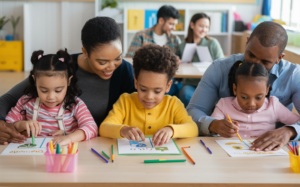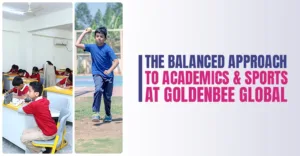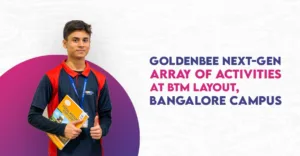
Supporting children with learning disabilities requires understanding, patience, and tailored strategies to help them succeed. Learning disabilities affect how children process information, impacting reading, writing, math, and other cognitive tasks. Here’s a comprehensive guide to effectively support children with learning disabilities.
1. Understand the Learning Disability
Before you can effectively support a child, it’s crucial to understand their specific learning disability. Common types include:
- Dyslexia: Affects reading and related language-based processing skills.
- Dysgraphia: Impacts handwriting and fine motor skills.
- Dyscalculia: Affects mathematical abilities and concepts.
- Attention Deficit Hyperactivity Disorder (ADHD): Impacts attention, impulse control, and hyperactivity.
Each child is unique, and their challenges may vary. Consulting with specialists can provide a clearer picture and guide appropriate interventions.
2. Foster a Positive Learning Environment
Creating a supportive and encouraging learning environment is key. Here are some tips:
- Be Patient and Understanding: Children with learning disabilities may take longer to complete tasks. Patience and understanding from parents and teachers can boost their confidence.
- Provide Clear Instructions: Break down instructions into smaller, manageable steps. Use simple language and visual aids to reinforce understanding.
- Encourage Open Communication: Create a safe space for children to express their difficulties and ask for help.
3. Utilize Individualized Education Programs (IEPs)
Individualized Education Programs (IEPs) are tailored plans developed to meet the specific educational needs of a child with a learning disability. An IEP may include:
- Personalized Learning Goals: Specific, measurable objectives tailored to the child’s needs.
- Accommodations: Adjustments in teaching methods, materials, and assessments to help the child learn more effectively.
- Specialized Instruction: Targeted teaching strategies and interventions to address the child’s unique challenges.
4. Incorporate Multi-Sensory Learning Techniques
Multi-sensory learning engages multiple senses simultaneously, aiding in better retention and understanding of information. Examples include:
- Visual Aids: Charts, diagrams, and flashcards.
- Auditory Tools: Reading aloud, using audiobooks, and incorporating music.
- Kinesthetic Activities: Hands-on activities, such as building models or using physical objects to teach concepts.
5. Leverage Technology
Technology can be a powerful tool to support children with learning disabilities. Some helpful resources include:
- Educational Apps: Many apps are designed to support various learning needs, from reading to math.
- Assistive Technology: Tools like text-to-speech software, speech-to-text programs, and interactive whiteboards can make learning more accessible.
- Online Resources: Websites and online platforms offer interactive learning experiences and tutorials tailored to specific disabilities.
6. Encourage Strengths and Interests
Focusing on a child’s strengths and interests can boost their self-esteem and motivation. Encourage activities they enjoy and excel in, whether it’s art, sports, music, or any other area. Celebrating successes, no matter how small, can build confidence and a positive attitude toward learning.
7. Provide Emotional Support
Children with learning disabilities often face frustration and low self-esteem. Emotional support is crucial:
- Be a Cheerleader: Celebrate their achievements and progress.
- Listen Actively: Show empathy and validate their feelings.
- Teach Resilience: Encourage a growth mindset, emphasizing effort and persistence over perfection.
8. Collaborate with Educators and Specialists
Working closely with teachers, therapists, and other specialists ensures a cohesive support system for the child. Regular communication and collaboration can help identify challenges early and implement effective strategies.
9. Promote Self-Advocacy
Empower children to understand their learning disabilities and advocate for themselves. Teach them to:
- Recognize Their Needs: Understand what helps them learn best.
- Communicate Effectively: Express their needs and challenges to teachers and peers.
- Seek Help: Encourage them to ask for assistance when needed.
Conclusion
Supporting children with learning disabilities is a journey that involves understanding, patience, and collaboration. By creating a positive environment, utilizing personalized strategies, and fostering emotional well-being, you can help children with learning disabilities thrive academically and personally. Remember, every child has unique strengths and potential waiting to be unlocked. For more learning visit us.






